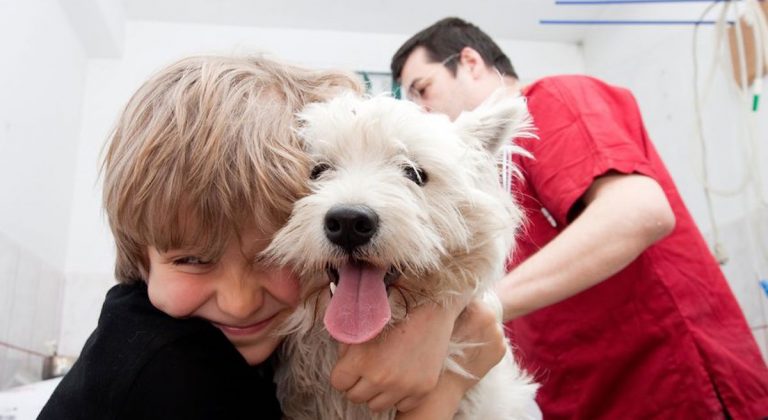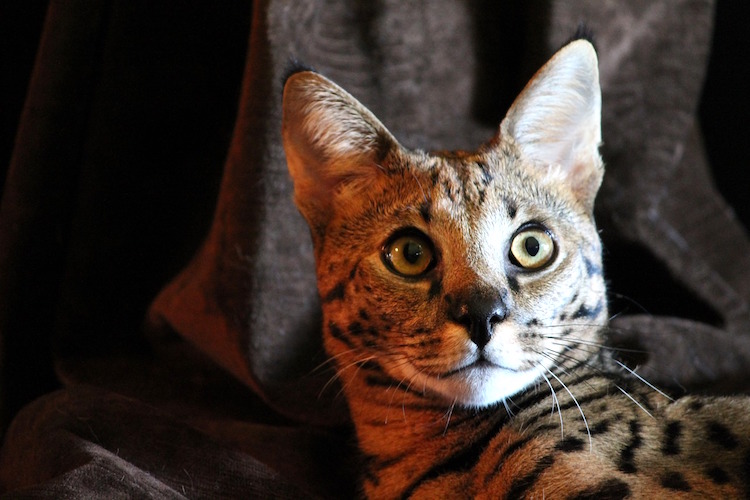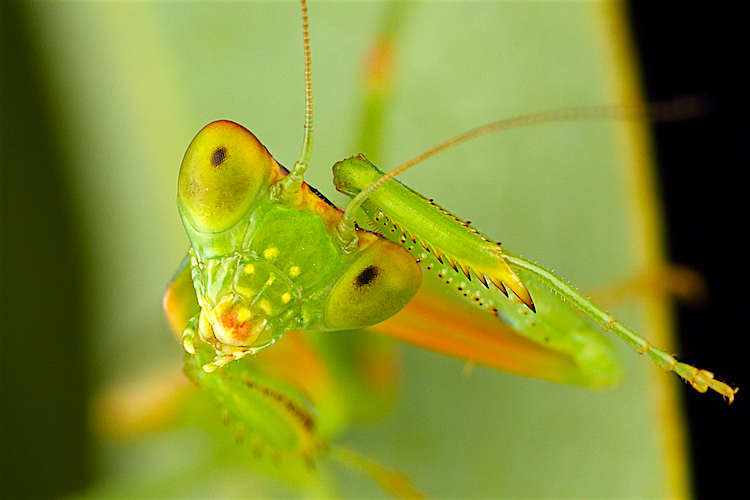Kangaroos as Pets: Cute or Cruel?
Kangaroos as pets? Terrible idea — especially if your property is nothing like their natural habitat. Here’s why keeping kangaroos as pets is bad news.
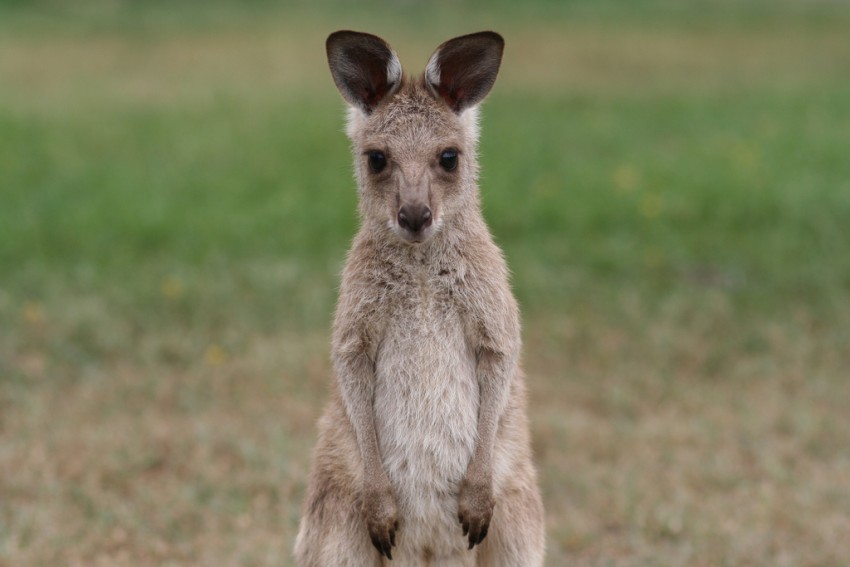
A family in Alabama was on the news for keeping not 1 but 3 kangaroos as pets in their home.
Rolando and Roxie, 6-month-old red kangaroos, were bred in Texas. Soe was a 3-month-old kangaroo bred in Ohio.
The family dressed them in cute little T-shirts and treated their pet kangaroos just as they would pet dogs or cats — they even took them out to events in the community.
According to ABC affiliate WAAY-TV reporter Kyle Burger, the kangaroos lived in the barn but spent a good deal of time in the house — which was alarming to anyone familiar with the risks of keeping kangaroos as pets.
“They can be very large — they can leap 25 feet long, 6 feet high,” said one of the family members. “So they can cover a lot of ground at 40 to 45 miles per hour in speed when they’re running.”

Don’t leave your pet’s safety to chance
Sign up for Petful recall alerts today.

Kangaroos Need Lots of Space
Because kangaroos enjoy having a lot of space to boing-boing around in, they might not be the best choice of pets — no matter how cute they are in their little T-shirts and diapers or how much they love their families.
According to the Kangaroo Protection Coalition:
“In the United States and Canada, red and grey kangaroos are also bred for pets, and for sale to zoos and wildlife parks. Reports we receive indicate that the death toll is very high amongst these animals, as quite often they are restrained in small yards. Few overseas veterinarians know anything about them, and macropods do succumb very easily to stress-related diseases.
Wallabies and kangaroos cannot be house-trained, nor should they mix with domestic animals; they can catch diseases off them. Wallabies and kangaroos need a very big grassed area to live in, and company of their own kind.”
The Cost of Kangaroos as Pets
Although the news report didn’t say how much the family paid for their 3 marsupials, males kangaroos usually cost around $2,000 and females go for $3,000.

Just How Dangerous Are Kangaroos to People and Pets?
Although many of us know a few basic facts about kangaroos — they’re in Australia, they hop and they carry their young in pouches — we struggle to come up with anything deeper concerning kangaroos.
With that being the case, let’s take an in-depth look at this animal.
Kangaroo Background
According to the National Museum of Australia, kangaroos were “discovered” by Europeans when Captain Cook of the HMB Endeavor returned to England in 1771.
In a few short years, the kangaroo came to epitomize the Australian continent, appearing on currency, stamps and logos.
But kangaroos had been around a lot longer than that. In Kangaroos: Biology of the Largest Marsupials, author Terence J. Dawson explains:
“The extensive radiations of the kangaroos and their relatives accompanied the drying out of Australia and the spread of grasslands. This process was well underway by 4–5 million years ago, in the Pliocene period, when the first species clearly related to the modern gray kangaroos and wallaroos began to appear in the fossil record.”
Kangaroos today — including the red kangaroo, antilopine kangaroo, eastern and western gray kangaroos — are similar to their ancestors, though a bit smaller.
For example, one ancestor was called the Macropus Titan.
A giant kangaroo? Yikes — let’s just say we’re glad we’re alive now and not then.
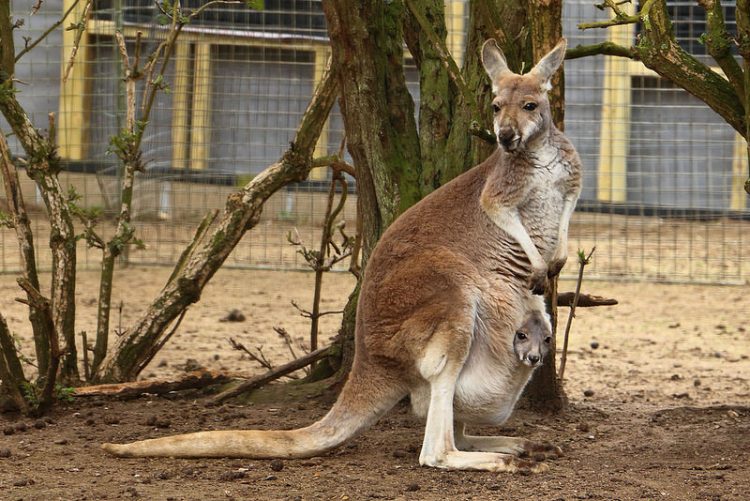
Kangaroo Society
Kangaroos tend to gather in groups called “aggregations.”
Think of this as being like a human family unit:
- These aggregations will often come together in larger groups, aptly called “mobs.”
- For us, it would be like several families joining together for a holiday party.
- The purpose of all this socializing is for safety. Many kangaroos working together can more easily spot a predator.
Again, like human families, kangaroos can exist harmoniously or aggressively.
Laid-back roos will engage in patting or stroking each other’s noses or faces, mutual grooming and stroking a female’s pouch. Many younger kangaroos will also play-fight, much like young kittens or puppies who engage in wrestling matches.
When kangaroos really fight about things like mating rights, it can be dangerous and deadly.
National Geographic’s video demonstrates just how hardcore these animals are when they battle. Their real weapons are their extremely strong legs and feet, capable of disemboweling or even killing their opponent.
Kangaroo Kids
Kangaroos have a short gestation period.
After the egg is fertilized, the baby roo is born 30–45 days later, and they’ll be only a few centimeters long. Their hind legs won’t be fully developed yet, but they’ll use their stronger front legs to climb into their mother’s pouch.
Once they make it in safely, they’ll find a teat to latch onto for nourishment. They’ll spend roughly another 230 days growing. As they get bigger and more developed, they’ll start peeking outside the pouch.
Gradually, the roo will get bolder and leave their mother’s pouch for short periods of time.
When they’re fully ready, they’ll leave the pouch for good and start eating what their parents eat, namely vegetation.
In the wild, kangaroos live for perhaps 6 years, although some in captivity have lived to be 20.
If you’re thinking of keeping kangaroos as pets, despite our misgivings, watch this video to learn important advice:

Kangaroos and People
In general, kangaroos tend to be shy and avoid people, but there have been cases when kangaroos have gone on the offensive.
Just 2 recent horror stories:
- In October 2016, a kangaroo became inadvertently trapped in a backyard, attacked the homeowners, and mauled and killed the family’s Pomeranian.
- In July 2011, a 94-year-old woman was attacked in her backyard while she was hanging laundry (she survived).
Like deer, kangaroos can also become panicked and blinded by headlights or sounds of oncoming vehicles.
They often reach weights of several hundred pounds and speeds of 50 miles per hour, so when you accidentally hit one, the risk of injury or death to both you and the kangaroo is high.
Kangaroos may attack when they panic or become trapped or threatened. So it’s best to avoid kangaroos — they are wild animals and are more than capable of inflicting injury.
If you live in Australia, take precautions to leash your dogs, because kangaroos have proven to be quite dangerous when provoked.
* * *
Melissa Smith contributed to this article on kangaroos as pets.

